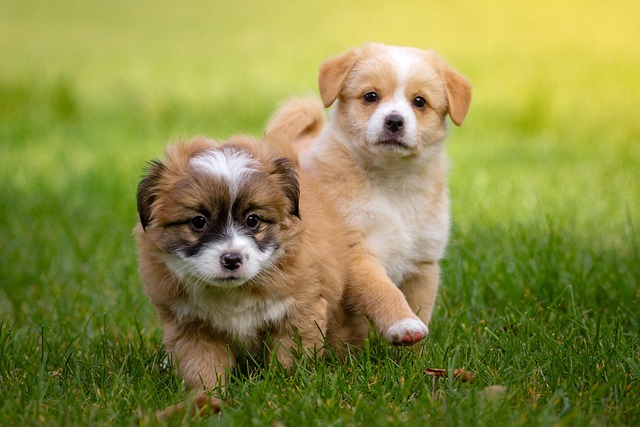
What is glaucoma in a dog?
You might notice your dog squinting more at mealtime or avoiding bright sunlight—these small changes could be early signs of a serious eye condition.
If you’re a new dog parent in the US—maybe you’re sitting on your Colorado apartment floor, watching your 18-month-old rescue German Shepherd, Max, pace after a walk where he barked at every passing dog, and you wonder: Could what I’m feeding him be making his reactivity worse? It’s a common, stressed-out question, and while food won’t “cure” reactivity (that takes patient training!), the right diet can help your pup feel calmer from the inside out—making those training sessions way easier. Let’s break down what to feed a reactive dog, why it matters, and how it fits with local pet rules and habits.
First, let’s keep the science simple: Your dog’s gut and brain are connected—vets call this the “gut-brain axis.” Just like how eating too much junk food makes us jittery, some dog foods can ramp up a reactive pup’s stress. Reactive dogs are already in “fight-or-flight” mode a lot, so foods with artificial additives, cheap fillers (like corn or by-products), or excess sugar can spike their energy and make them more on edge. On the flip side, nutrients that support calm include omega-3 fatty acids (they help with brain health and reduce stress-related inflammation) and tryptophan (it helps make serotonin, the “feel-good” chemical). Take Sarah, a first-time owner in Texas: Her reactive Corgi, Lila, would lunge at bikes and have upset tummies. Her vet switched Lila to a salmon-based kibble (rich in omega-3s) and added a spoonful of plain pumpkin (for gut health), and within a month, Lila was less reactive—she’d stop and look at bikes instead of lunging.

Here’s how to pick the right food, step by step: Start with high-quality kibble where “real meat” (chicken, salmon, beef) is the first ingredient—skip brands with long lists of artificial colors, preservatives, or “meat by-products” (those are low-quality bits). If your pup has sensitivities (common in reactive dogs!), try grain-free options (but check with your vet first—some grains are okay). Add vet-approved extras: A teaspoon of fish oil mixed into meals (too much can cause diarrhea, so stick to their dose) or plain, unsweetened yogurt (it has probiotics for gut health). For training—critical for reactive dogs—use high-value, low-calorie treats: Freeze-dried chicken, tiny pieces of cooked turkey, or mashed banana. These work better than store-bought cookies because they’re super motivating, and positive reinforcement (not punishment) is the only way to build calm. Never withhold food as a punishment—it breaks trust instantly and goes against US animal welfare norms that ban cruelty.
Now, let’s tie in rules and community habits that matter. Every US state requires core vaccines (distemper, parvovirus)—while diet doesn’t replace shots, regular vet visits (mandatory for vaccine updates) let your vet tailor a diet plan. For example, some reactive dogs have food allergies that worsen stress, and a vet can spot that. Skipping vet checkups could get you fined $150–$200 in California or New York. If you live in an apartment (common in NYC or Chicago), store kibble and treats in airtight containers—this keeps pests away and prevents strong odors from bothering neighbors. When you walk your reactive dog (treats in hand for training!), always clean up their poop—cities from Seattle to Miami have fines up to $300 for leaving waste, and it shows respect for shared spaces. And during walks, don’t let treats fall on the ground—other dogs might snatch them, leading to tension that stresses your pup out more.
Remember, food is a tool, not a fix. Pairing the right diet with calm training (like keeping distance from triggers) will help your reactive dog feel their best. It might take a few weeks to see a difference—be patient. Before you know it, that pacing, barking pup will be calmer at mealtime and more focused on you during walks.

You might notice your dog squinting more at mealtime or avoiding bright sunlight—these small changes could be early signs of a serious eye condition.

Let’s set the scene: It’s a sweltering Phoenix afternoon—105°F outside—and you rushed your 2-year-old Lab mix, Cooper, on a quick walk to “get it over with.”

Let’s get real: You’re in your Miami apartment, watching your 3-year-old Corgi, Loki, struggle to climb the stairs to your second-floor unit.

Many dog owners brush off occasional scratching as just “dog behavior,” but persistent itching often signals something more—like a food allergy.

You might first notice your dog scratching more than usual—chewing at their paws until the fur looks thin, or rubbing their face against the couch nonstop.

Let’s be real: You’re standing in your Chicago apartment, watching your 3-year-old Beagle, Max, huff and puff just to climb onto the couch.